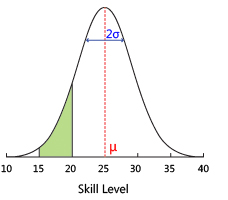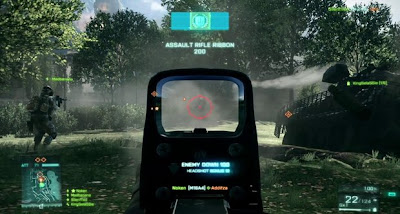The year is coming to a close, which means the onslaught of gaming releases will be accompanied by many a "Top 10 of 2011" list. Favorites will be chosen and lists will be compared, but one thing will remain true - this has been a great year in gaming. For this reason, it is interesting to look back at all the great titles that were released this year to remember the big moments, surprises, and tears of joy that they brought to us. This is part one of a look back at gaming for the year of 2011.
January-April
January
The year began with gamers still in a gaming stupor from the fall releases.
Call of Duty: Black Ops, Assassin's Creed: Brotherhood, and other big name titles remained glued to consoles as players scrounged for achievements and a higher kill/death ratio. What usually begins as a lull soon became anything but, as a handful of titles were released to get the year started right.
MMO fans got the first treat of the year with
DC Universe Online for the PS3 and PC. Players chose a mentor such as Batman or The Flash and began their journey into becoming a superhero or villain. A slew of customization and ability to shape your hero with whatever power you could imagine had many clamoring to create their superhero persona. With the game recently announced going free to play, this exclusive license to the DC universe gave fans of the comics a tool to drop themselves into their favorite DC universe.
The PS3 got a big exclusive start with
Little Big Planet 2. The user-friendly side scroller was a nice break from the more serious titles of the previous year, and offered a simplistic and brilliant platforming experience. Expanding the community features, LBP2 allowed for easier level creation along with some of the best variety a platformer could contain. Featuring everything from jetpacks to mobile bunnies, the game was a blast to play with three other friends at your side.
Two Worlds II gave a taste of the RPG market for the year. Along with the typical leveling and action oriented RPG elements,
Two Worlds II offered one of the best crafting systems in a game. Everything was worth looting and the layout was simple enough to grasp and complicated enough to repurpose every item you stumbled upon.
The month belonged to survival horror however, as the highly awaited
Dead Space 2 was released on January 25th. Continuing the horrors of the Ishimura, Isaac Clark once again battled through mutilated creatures to discover the truth behind The Marker. Sporting a new multiplayer along with new weapons and abilities, the game was favorably reviewed and EA reported that Dead Space 2 sold nearly 2 million units in the first week of its release.
February
Bulletstorm brought a new IP to the market. Offering what can only be described as a puzzle shooter, the team at People Can Fly and Epic Games rewarded variety in a standard FPS. With an arsenal of unique weaponry and humorous play on word rewards, the game sold over 1 million copies and gave owners early access to the
Gears of War 3 beta.
PS3 fans put another notch to their trilogy belt with
Killzone 3. Taking place in various locations, from Arctic landscapes to lethal jungles, the classic feel of KZ2 returned complete with a new jetpack feature to take the shooting skyward. Revamped melee combat (known as Brutal melee) allowed you to string together multiple combos, but never strayed far from its shooting mechanics. As expected the feel and look of the game continued in classic KZ fashion, and went on to sell over 1.8 million copies worldwide.
Fighting fans were finally at ease with the release of the ever speculated
Marvel vs Capcom 3: Fate of Two Worlds. Continuing the fast-paced action of the previous installment, the third title in the series offered a unique look and feel as Capcom and Marvel's biggest stars fought it out on various stages. The cel shaded look and sleeker roster provided an online fighting experience like no other, as playes quickly assembled their personal favorite team of all stars. As of March, the game has sold over 2 million copies worldwide.
March
Kicking the month off with an MMO,
Rift became a strong contender against the juggernaut that is
WoW. Choosing one of four classes with branching paths, the player had the ability to customize their character down numerous sub-class trees and switch roles at their choosing; going from warrior to healer in no time at all. The game proved that MMOs could still grow from the traditional formula, as server wide invasions brought noobs and pros alike together to stem the incoming baddies.
Pokemon continued its legacy in releasing
Pokemon: Black and White. Showing that the series is very much alive and well, the game offered seasonal change to affect when certain Pokemon appeared in addition to the day and night feature. The all new triple battles offered a 3v3 pokemon fight. In the US,
Black and
White sold more than 1.08 million copies on day one, but in Japan it became the fastest selling DS game to sell five million copies.
The first game to showcase the CryEngine 3,
Crysis 2, also debuted this month. Similar to Crysis, the player customized their weapon loadouts and character traits how they saw fit; be it the guns blazing method or stealthy approach. Multiple suit modes could be used simultaneously, emphasizing the maneuverability of the character and showing how you could be as stylish in movement as you were with guns. As of June over 3 million copies of the game have been sold across all platforms.
The highly anticipated sequel to
Dragon Age: Origins,
Dragon Age II, was released later in the month. Taking place after the events of the first game, a new cast of characters continued the fight against the remaining Darkspawn and Quin threat. Putting in a new combat system as well as
Mass Effect inspired dialogue trees, the game was more streamlined for console appeal. One million copies of
Dragon Age II were sold within two weeks of the launch, faster than
Dragon Age: Origins. Yet, the repeating environments and quests drew little praise from critics.
The month belonged to the handheld teased at E3 2010; the
Nintendo 3DS. Set at a launch price of $250 the 3DS was lighter, sleeker, and faster than the previous DS handhelds with 3D capability that was glasses free. The downside came with news of a 3-5 hour battery life. Without many launch titles to back the handheld, initial sales were lower than expected. As a result, Nintendo would later cut the price by a third, giving existing owners ten free Nintendo games for their faithful purchase. As of today, only about a million in sales account for 3DS owners in the US, with 4.3 million worldwide.
April
Mortal Kombat made its return with a ninth installment. Even after years of churning out titles,
Mortal Kombat brought the classic brutal fighting we have come to know and raised it to the next level. A new combo bar allows the use of bone-crunching "X-ray" blows and Fatalities were as gruesome as ever. New features like a Fatality training mode, ability to switch characters during the single player story mode, and Challenge Tower rounded out a fighting game worth the price. NetherRealm Studios reported that
Mortal Kombat has shipped close to three million units, which actually covered the cost for the entire Midway asset acquisition.
Not to be forgotten, the Xbox Live Arcade/PSN released
Outland. Combining platforming with a polarity system similar to
Ikaruga,
Outland was a stylish game that was as fun to play as it was to watch. The constant switch between light and dark powers made for enjoyable combat and memorable boss encounters. Complete with an Arcade mode and co-op capabilities, the game made its mark as a must play arcade title that offered a refreshing platforming challenge.
One game overshadowed this month, and that was the highly anticipated release of
Portal 2. Players once again hit the test chambers with new puzzles, new obstacles, and a new favorite character. With brilliant voice work and a co-op experience to share the fun,
Portal 2 was a sequel that did not disappoint. Stephen Merchant and J.K. Simmons gave brilliant performances to boost the series, providing just as much character as GLaDoS. The new gels added some additional thinking to the typical portal puzzles, and level design made you think before acting. In June, Newell announced that
Portal 2 had sold 3 million copies, with more sales on the PC than consoles.










































